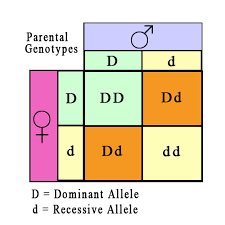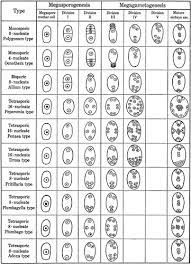Physiological Changes During Senescence
Physiological Changes During Senescence
(i) Photosynthesis:
It is generally observed that the net photosynthetic rate
increases as leaves grow and then declines gradually at the time of maximum
leaf expansion. This indicates that the rate of photosynthesis is a function of
individual leaf age. During the rapid phase of whole plant senescence, young
and old leaves degenerate almost together. The rate of photosynthesis also
declines with equal rapidity in young and old leaves. Simultaneous senescence
of leaves occurs not only in monocarpic senescence but also in autumnal senescence
of polycarpic plants. Although loss of chlorophyll content is a commonly used
index of senescence, it does not always measure accurately either senescence or
photosynthetic activity. Chlorophyll content usually decreases well after
photosynthetic activity has begun to decline, and in some cases, chlorophyll
content shows an increasing trend while the photosynthetic activity is
dropping. Even then, chlorophyll loss during senescence offers a visual method
of estimating the degree of senescence. As with chlorophyll content, the
synthesis and activities of chloroplast enzymes (e.g., RuBPcase) decline after
the cessation of leaf growth which is parallel to the loss of photosynthetic
activity. Batt and Woolhouse, demonstrated that the Calvin cycle enzymes that
are synthesized on chloroplast ribosomes decline earlier during senescence than
those synthesized primarily on cytoplasmic ribosomes. It has been shown that
conformational changes and loss of active site leading to the loss of RuBPcase
occur at a faster rate than the breakdown of total Fraction I. Although
photorespiration does not show a uniform pattern of change in all aging plants,
it increases greatly in senescing C4 plants, and the increased
photorespiration, a characteristic of C3 plants, may be related to a shift to
C3 type CO2 fixation. Thus, it appears that the overall decrease in
photosynthetic rate in senescing leaves results from a decline in CO2 reduction
reactions.
(ii) Respiration:
The respiratory apparatus of senescing tissue remains active
until late in senescence, and then declines rapidly. Loss of respiratory
capacity can be a factor in the final stage of senescence, whereas there is
evidence that the initial stage of senescence is not linked with respiratory
decline. The mitochondria often swell and decrease in number, but these changes
occur late in senescence. Amino acids have been found to accumulate, giving
rise to a change in the respiratory quotient. A climacteric rise in respiration
may occur in the senescence of both intact and detached leaves. From the fact
that respiration decreases only late in senescence and that the lack of oxygen
supply prevents the breakdown of chlorophyll and protein, it appears that
cellular energy is required during senescence, possibly for the synthesis of
the degradative enzymes. The respiratory climacteric of senescing leaves is
correlated with a rise in RNA levels and an increase in protease activity.
(iii) Nitrogen Fixation and Mineral Uptake:
Several studies have demonstrated that symbiotic nitrogen
fixation in legumes directly depends upon the amount of photosynthetic
available to the root nodules. It is interesting to note that depodding which
increases the availability of photosynthetic can cause appreciable increase in
nitrogen fixation and delay nodule senescence. In a similar way, the decline in
whole plant photosynthesis parallels the decline in nitrogen fixation.
Symbiotic nitrogen fixation decreases with the aging and senescence of
leguminous plants. Such decline in nitrogen fixation is associated with the
structural changes of individual nodules and bacteroids which is followed by
their senescence. Root growth as well as root function usually slow early in
the reproductive phase, lust like nitrogen fixation, mineral uptake through the
roots suffers a decline during the reproductive phase.
(iv) Protein and Nucleic Acids:
The most basic of all events accompanying senescence is the
decline in protein and nucleic acid levels. It has been shown that although
there is a decline in protein, RNA and DNA of senescing tissues, these three
metabolites do not decline at the same rate. There is an early gradual decline
in protein and RNA about the time when vegetative growth ceases, while DNA
decreases last. The initial decrease in protein and nucleic acid in the
chloroplast involves a decrease in the major chloroplast enzyme. RuBP case and
other enzymes which are synthesized on chloroplast ribosome. The loss of these
enzymes is correlated with reduced ability of the chloroplast to synthesize
protein and RNA coupled with a reduction in the number of chloroplast
polysomes. The decline in protein and nucleic acids takes place in two stages.
The period of gradual decline, characteristic of initial stage of senescence,
is followed by more rapid senescence and rapid decline when chlorosis or leaf
yellowing starts. During the rapid decline, protein and nucleic acid
degradation is accelerated in both the chloroplasts and the cytoplasm. In
addition, the synthetic capacity in the whole cell decreases. During this
period, large quantities of hydrolytic enzymes like protease, RNase,
phosphatase and chlorophyllase are synthesized on cytoplasmic ribosome. Thus,
the prime candidates for central centres for a marked decline in protein and
nucleic acids seem to be due to (a) release or activation of hydrolases present
in the vacuoles or lysosomes, (b) a possible decrease in protease inhibitor,
and (c) a decrease in protein and nucleic acid synthesis. In the whole plant,
the senescing leaves before their abscission are depleted of materials like
amino acids, sugars which are transported to other parts.
(v) Membranes and Organelles:
Of all the cell organelles, the chloroplast shows the
earliest symptoms of physiological decline. Decrease in RuBP case activity is
noticed first with a corresponding early loss of chloroplast ribosomes and this
precedes the decrease in cytoplasmic ribosomes. In later phases of senescence,
however, pronounced ultra-structural changes in the thylakoids occur. Other
changes occurring at this time include swelling, vesiculation and disappearance
of endoplasmic reticulum (ER) and Golgi bodies together with the loss of
ER-associated ribosome. The galactolipids and sulpho-lipids, the constituents
of chloroplast lipids, decrease before the phospholipids that predominate in
the non-chloroplast membranes, suggesting that the biochemical decline may
occur relatively early in chloroplasts. Although the changes in chloroplasts
occur early, they remain intact till the time when the tonoplast ruptures. As
soon as the tonoplast disintegrates, the hydrolytic enzymes, acids and toxic
compounds are released in the vacuole and this triggers the cellular
degradation. In the final stage of cellular degradation, the plasma lemma
disintegrates and the nucleus undergoes massive alteration, whereas the
mitochondria may persist with intact shape even at this stage. It is generally
acknowledged that membranes seem to play an important role in plant senescence.
(vi) Nutrient Deficiency Syndrome:
Nutrient deficiencies may be important in the senescence
programme of particular organs or the whole plant. This concept finds support
in the senescence of monocarpic plants where the emergence of reproductive
structures like flowers and fruits seems to impose a great demand on the
vegetative body, thus causing nutrient deficiency. In such cases, the life of
the plant can be spared or at least death can be delayed by removal of the
reproductive structures, obviously, through avoidance of nutrient deficiency. At
present, it has been possible to recognize two patterns of deficiency:
(i) Nutrient drain or withdrawal from the senescing parts
(ii) Diversion of the supply of nutrients away from the
senescing organs
Thus, nutrient deficiency seems to be the primary cause of monocarpic senescence. Deficiency caused by nutrient drain, e.g., mineral withdrawal, and nutrient diversion, e.g., mineral and cytokinins from the roots and photosynthetic produced by the leaves, presumably play a role in monocarpic senescence.



Comments